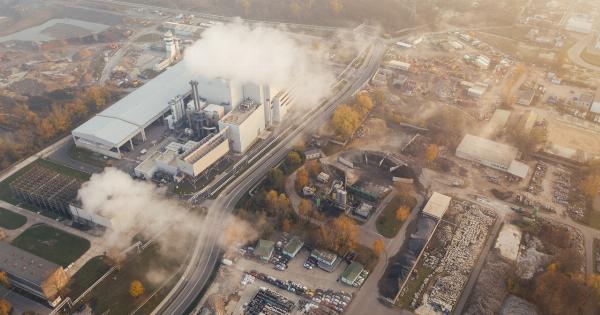Photochemical smog, also known as “photochemical cloud,” is a complex mixture of various pollutants that form when sunlight reacts with nitrogen oxides and volatile organic compounds.
These pollutants have harmful effects on both the environment and human health. In this article, we will discuss the impacts of photochemical smog on human health.
What is Photochemical “Cloud”?
Photochemical smog is a brownish haze that can often be seen hanging over urban areas. It is formed when nitrogen oxides and volatile organic compounds react in the presence of sunlight.
These chemicals are emitted from sources such as automobile exhaust, industrial processes, and gasoline vapors. The reaction between these chemicals produces a variety of secondary pollutants, such as ozone and peroxynitrate.
Health Effects of Photochemical Smog
Photochemical smog can have serious impacts on human health. The primary pollutants that make up photochemical smog include:.
- Ozone
- Peroxyacyl nitrates
- Aldehydes
- Particulate matter
Ozone, a major component of photochemical smog, is a highly reactive gas that can damage lung tissue and cause respiratory problems.
Studies have shown that even short-term exposure to ozone can aggravate pre-existing respiratory conditions such as asthma and bronchitis. Long-term exposure can even lead to the development of lung diseases such as emphysema and chronic bronchitis.
Peroxyacyl nitrates, another component of photochemical smog, can cause eye and respiratory irritation. They can also damage lung tissue and contribute to the formation of respiratory diseases.
Aldehydes, which are produced from the incomplete combustion of fossil fuels, can also cause eye and respiratory irritation. High levels of particulate matter, which is made up of tiny airborne particles, can cause respiratory problems as well.
Who is Most Affected by Photochemical Smog?
All individuals can be affected by exposure to photochemical smog. However, certain groups are more susceptible to its harmful effects. These groups include:.
- Children
- Elderly individuals
- Individuals with pre-existing respiratory conditions
- People who work or exercise outdoors
Children are particularly vulnerable as they are more likely to spend time outdoors and their lungs are still developing.
Elderly individuals may have compromised respiratory systems, making them more sensitive to the harmful effects of photochemical smog. Those with pre-existing respiratory conditions, such as asthma, are more likely to experience aggravation of their condition.
People who work or exercise outdoors, such as construction workers or athletes, are also at increased risk of exposure to photochemical smog.
How to Protect Yourself from Photochemical Smog?
There are several steps you can take to reduce your exposure to photochemical smog:.
- Avoid outdoor activities during times of high pollution
- Avoid exercising near high-traffic areas
- Keep windows and doors closed during times of high pollution
- Avoid using gas-powered lawn equipment during times of high pollution
- Use public transportation or carpool instead of driving alone
- Encourage local authorities to implement measures to reduce pollution
Reducing your exposure to photochemical smog can help protect your health and the health of those around you.
Conclusion
Photochemical smog, or “photochemical cloud,” is a serious environmental problem that has harmful effects on human health. It is important to understand how it forms, its composition, and its impacts on health.
Reducing exposure to photochemical smog can help protect individuals, particularly those most vulnerable.



























